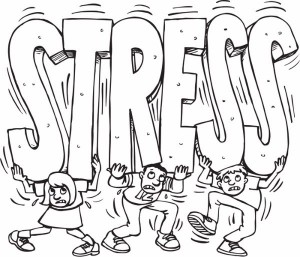To celebrate Halloween we are reposting this article filled with sarcasm, irony and silliness for your spook-filled enjoyment. Medivizor does not endorse any of the medical treatments, suggestions or alternatives provided in this post.
Guest Post by John Friesen, Senior Contributor for Interface Health Weekly
WELCOME TO THE INTERFACE HEALTH SHOWCASE OF HORROR
 Over the years, Hallowe’en has gone from fun-night for kids to a near-bacchanalia for adults. Why? Because it’s a good excuse for cutting loose, behaving excessively, indulging dress-up or cosplay fantasies and scaring the crap out of people without doing actual harm.
Over the years, Hallowe’en has gone from fun-night for kids to a near-bacchanalia for adults. Why? Because it’s a good excuse for cutting loose, behaving excessively, indulging dress-up or cosplay fantasies and scaring the crap out of people without doing actual harm.
One of the things we at INTERFACE Health particularly enjoy about Halloween (which dropped the apostrophe between the ‘ee’s several decades back) is the annual Simpson’s Tree House of Horror TV episodes.
This year, to celebrate Halloween, we bring you the INTERFACE Health Showcase of Horrors – facts and figures to make you afraid… very afraid! (But also a few things to make you feel better).
SHOWCASE HORROR #1 – IF YOUR LIFESTYLE DOESN’T KILL YOU, YOUR ENVIRONMENT WILL
Nobody gets out of life alive. That’s a given. But despite our increasing average lifespans, shocking numbers of us still drop out early from preventable causes.
The breakfast of death
 Cancer: Depending on the type of cancer and what research you believe, cancers are 70% to 90% preventable. The World Health Organization’s International Agency for Research on Cancer (IARC) has just released results of a study confirming suspicions that processed meats are a major cause of colorectal cancers, as well as pancreatic and prostate cancers.
Cancer: Depending on the type of cancer and what research you believe, cancers are 70% to 90% preventable. The World Health Organization’s International Agency for Research on Cancer (IARC) has just released results of a study confirming suspicions that processed meats are a major cause of colorectal cancers, as well as pancreatic and prostate cancers.
They ranked bacon, ham, sausages and other processed meats as group 1 carcinogens along with such well known dangers as asbestos, alcohol, arsenic and tobacco. The study concluded that each 50-grams (1.8 ounces) of processed meat eaten daily increases the risk of colorectal cancer by 18%.
There goes breakfast. Have a nice bowl of porridge, instead. Oh, the horror!
OK, OK, eating processed meats is a risk factor, not a death sentence. The truth is that people who don’t eat processed meats are almost as likely to develop colorectal cancers, which have an overall risk of occurring of between 5.5% and 6.5%. Go ahead, enjoy your fried Spam sandwich…
Poor, sad, stressed-out you
 There isn’t universal agreement on the connections between stress, depression and your risk of having a heart attack or a stroke (CV incident). But if stress or depression aggravate hypertension or drive you to unhealthy habits, such as drinking, overeating and avoiding exercise, then your risk of a heart attack or stroke increases.
There isn’t universal agreement on the connections between stress, depression and your risk of having a heart attack or a stroke (CV incident). But if stress or depression aggravate hypertension or drive you to unhealthy habits, such as drinking, overeating and avoiding exercise, then your risk of a heart attack or stroke increases.
- Being inactive increases your risk of a CV incident by about 50%
- Eating a high fat diet increases your risk by about 30%
- Having high blood pressure increases your risk by 10% – 15%
- High cholesterol carries a 4.5% risk
Are you sitting down?
 We hope not. Sadly for us desk jockeys, sitting down all day at work may be the un-safest thing we do. Some people now refer to sitting at a desk as the new smoking, because studies suggest it may increase your risk of dying unexpectedly by 40%.
We hope not. Sadly for us desk jockeys, sitting down all day at work may be the un-safest thing we do. Some people now refer to sitting at a desk as the new smoking, because studies suggest it may increase your risk of dying unexpectedly by 40%.
You can’t even sit down and relax with a little TV or have a good long lie-in on the weekends. There are studies linking TV watching for three hours a day to a 64% greater risk of dying than someone who watches less TV. Apparently, all forms of sedentary behaviour (such as lying in bed) increase your health risks. Just look at cats – they sleep 15 to 20 hours a day and rarely live past 20!
Better not go to the hospital
It’s an old joke that with so many ways of dying, your only safe place is in a hospital. But apparently that’s not true. In the USA, there are over 400,000 preventable medical deaths a year from drug reactions, wrong prescriptions, botched procedures and inappropriate treatments. Forbes recently reported that, on average, critical care hospital patients experience nearly two medical mistakes each day!
Miscellaneous death and disability
If doctors, medications and therapies don’t kill you, there are always falls and other accidents waiting to maim you or do you in. Each year, countless thousands of people die or are injured in automobile and industrial accidents, home accidents, and falls (the risk of injuring yourself in a fall is about 3%). On the positive side, there are apps that can determine when a person’s risk of falling (such as a senior) has increased, or that can detect a fall and dispatch help.
Animals, insects, mites, microbes and viruses
Probably half the world, some 3.5 billion people, are at regular risk from diseases carried by animals (rabies, prion diseases), insects (malaria, bubonic plague) or mites (scrub typhus, allergic reactions). And, of course, there are vast numbers of diseases caused directly by infectious microbes and viruses.
animals (rabies, prion diseases), insects (malaria, bubonic plague) or mites (scrub typhus, allergic reactions). And, of course, there are vast numbers of diseases caused directly by infectious microbes and viruses.
Antibiotics and vaccines can cure or prevent many diseases, but not always reliably. Antibiotic resistance is developing rapidly and some viruses replicate and mutate so quickly that we can’t always immunize ourselves against them.
Do you feel a sneeze coming on? Is it a cold… the flu… the Black Death?
SHOWCASE HORROR #2 – YOUR PAINKILLER MAY BE A REAL KILLER
Death over the counter
 The US FDA has released some alarming news: Over-the-counter, non-aspirin NSAIDS such as ibuprofen, naproxen sodium (e.g., Advil™ and Aleve™) and COX inhibitors may cause fatal heart attacks or strokes, even with only occasional use. Judy Racoosin, an M.D. with the FDA, says “there is no period of use shown to be without risk.” (source).
The US FDA has released some alarming news: Over-the-counter, non-aspirin NSAIDS such as ibuprofen, naproxen sodium (e.g., Advil™ and Aleve™) and COX inhibitors may cause fatal heart attacks or strokes, even with only occasional use. Judy Racoosin, an M.D. with the FDA, says “there is no period of use shown to be without risk.” (source).
What should you do? Try non-NSAID treatments such as RUTIN, a bioflavonoid found in many plants, such as buckwheat, apples and elder flowers, or capsaicin, an active ingredient of chili peppers. Hot and cold compresses, massage and stretching also work, as does mild exercise, transcutaneous electrical nerve stimulation (TENS), acupuncture, meditation and deep breathing.
Coffee? Aspirin? Weed?
 You could even try a strong cup of coffee for pain: When it was first introduced to Europe, coffee was recommended to relieve severe headaches and to calm hysteria (even though it may have contributed to both).
You could even try a strong cup of coffee for pain: When it was first introduced to Europe, coffee was recommended to relieve severe headaches and to calm hysteria (even though it may have contributed to both).
There’s always good old acetylsalicylic acid (aspirin), which in various forms has been used to relieve pain for some 3,000 years (just be wary of gastrointestinal bleeding, tinnitus and hearing loss).
Acetaminophen is also safe – except for your liver. You might want to try cannabis (if not illegal in your area), or ask your doctor for some form of natural or synthetic opioid. Kayos and killer apps.
Got severe toothache pain? Oil of cloves or a knock-out punch from a professional boxer should work – for a short while. Dentists are better for you, though.
And, of course, there are several inexpensive pain relief apps that use headphones and sound to alleviate your pain. Check your app store.
HORROR #3 – DIGITAL HEALTH WON’T SAVE YOU IF IT ISN’T MORE WIDELY ADOPTED
We have the technology, we can rebuild you
 Digital health could be a boon for health care through electronic medical records (EMRs); wearables and wireless sensors; fitness, compliance and engagement apps, plus other tools and apps for diagnosing ailments; providing genome-based, personalized treatments; creating 3D printed prostheses and (one day soon) vital organs, or even just enabling more efficient and effective scheduling and allocation of resources, such as scanners.
Digital health could be a boon for health care through electronic medical records (EMRs); wearables and wireless sensors; fitness, compliance and engagement apps, plus other tools and apps for diagnosing ailments; providing genome-based, personalized treatments; creating 3D printed prostheses and (one day soon) vital organs, or even just enabling more efficient and effective scheduling and allocation of resources, such as scanners.
The Rock Health Survey
Last issue, we reported on the Rock Health survey of consumer adoption of digital health technologies.
The survey looked at six categories and found adoption rates ranging from 50% to 71% for online health reviews and health information, to 12% or less for mobile health tracking, wearables, genetic services (7%) and telemedicine (12%).
So far, clinical adoption rates for wireless wearables and sensors are tepid. Most of the clinical interest focuses on EMRs, where the supposed portability of patient records could reduce health care costs, while promoting faster, more effective treatments and outcomes. (For more info on digital health in Canada, visit https://www.infoway-inforoute.ca).
Mother Jones: If you won’t talk to me, I won’t talk to you
But although EMRs have been adopted by some 70% to nearly 80% of doctors and hospitals in the USA and Canada, there is a big problem: lack of interoperability. There are several different EMR systems or programs in widespread use – and most of them don’t cross-communicate very well.
Mother Jones magazine recently ran a compelling article about EMRs and Epic Systems. The company was founded and is still run by Judith Faulkner. Her work in EMRs has given Epic a 56% share of the market for EMRs in the USA, and has made her a billionaire.
But like some other (but not all) EMR programs, Epic is a proprietary system that takes some private, record-by-record tweaking by the company for its health records to be readable by different systems, and vice versa. So, the promise is there, but not the delivery (reminds me of a rude limerick about a “young man from Australia”).
You can read the full article here.
____
We hope you enjoyed this bit of Halloween silliness! Happy Halloween!

![It’s Halloween! Scary Health News To Celebrate [Guest Post]](https://medivizor.com/blog/wp-content/uploads/2015/10/title3.jpg)




